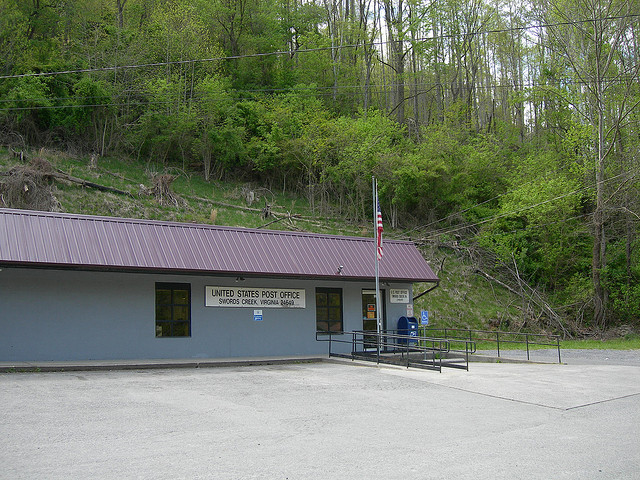September 17, 2014
Real Estate Decisionmaking in the Face of the Unknown
Eight months ago, I posted about a January 10, 2014 Supreme Court of Virginia opinion interpreting ambiguous words of conveyance in a Southwest Virginia coal severance deed. In CNX Gas Company, LLC v. Rasnake, the Court decided that CNX had the right to continue to extract the Coal Bed Methane from a tract of land in Russell County. The Court interpreted language limiting words of conveyance in a 1918 deed so as not to include CBM. A land conveyance represents real estate decisionmaking in the face of the unknown future.
On September 12, 2014, the Supreme Court of Virginia issued another opinion relating to CNX’s extraction of CBM from Russell County coal fields. Swords Creek Land Partnership v. Dollie Belcher, et al., interprets words of conveyance and the difference between CBM and coal. This case caught my attention because it discusses the Rasnake case. It also so happens that in the past year, “Words of Conveyance” was the most common term entered by all of you into the search feature of this blog.
Like Rasnake, the Belcher case concerns an (1) 1887 conveyance of coal, (2) from a land in Russell County, (3) to Joseph Doran and W.A. Dick, (4) whose successors in interest leased the CBM extracting rights to CNX Gas. Despite the factual similarities, the outcome of the two cases is different, because each deed contains different granting language.
On February 7, 1887, Christopher & Amanda Richardson executed a severance deed conveying:
. . . all of the coal, in, upon or underlying a certain tract of land and the timber and privileges hereinafter specified as appurtenant to said tract of land [metes and bounds description follows] to enter on, over, upon, and through said tract of land for the purpose of digging, mining, or otherwise securing the coal and other things in and on said tract of land hereinbefore specified, and removing the same from off said land . . . .
Ms. Belcher and two others are the successors in interest to the Richardsons. Swords Creek entered into a lease in 1991, granting the CBM to CNX’s predecessor in interest. Swords Creek receives 12.5% royalties from CNX.
Belcher and the other surface owners brought suit claiming rights to the CBM. In September 2013, the Circuit Court of Russell County entered an order finding that Swords Creek only had rights to coal, not to the CBM. Nine years before, the Supreme Court of Virginia decided that the term “coal” as used in the 19th century unambiguously referred to the mineral coal. In Virginia deeds from the 1800’s, CMB is a separate mineral estate from coal.
In upholding the Circuit Court’s decision, the Court discussed the Rasnake case, in which the granting language was deemed ambiguous. In Belcher, the Court found the words of conveyance to unambiguously convey only coal and timber, not including CMB. The Court found Belcher, et al., entitled to all of the royalties from the CBM.
What do Rasnake and Belcher add to what we know about words of conveyance in Virginia? My previous post discussed some of the key technical rules for construction of deeds. Today’s post adds two considerations at a higher-level of analysis:
- Managing What You Don’t Know. When Messrs. Doran and Dick went around Russell County, acquiring coal severance deeds from landowners, they engaged in real estate decisionmaking in the face of an unknown future. They knew that coal and timber fueled the national economic engine. They didn’t know that one day CBM would later be big business. They can’t really be faulted for that. There is an aphorism attributed to Confucius: “What you know, you know, what you don’t know, you don’t know. This is true wisdom.” This Chinese sage’s advice could well apply to everyday strategic real estate decisionmaking. What Doran & Dick did know was that the wording of deeds has the power to spawn or avoid future legal conflict. Severing out certain natural resource extraction rights from the surface owners can maximize the use and value of a parcel. It also heightens the risk that the interests of the parties will fall out of alignment. Perhaps Confucius would advise us to be healthily aware of such risks. Sometimes efforts to simplify a transaction can reap dividends.
- Drafting or Litigating over Property Instruments. The words in a land instrument granting property are facts that Courts feel comfortable interpreting without deference to findings by a jury. Even the threshold question of whether the language in a deed is ambiguous is a legal one. The Supreme Court of Virginia took two of these similar cases and published opinions on them in a 8-month time frame. In title cases where no facts are in dispute, the appellate court will be less reluctant to disturb a decision of the trial court. The language of the instruments needs to make sense, to a general audience but especially a judge if necessary. The choice of language that agreed to in a deed requires careful consideration by a qualified real estate attorney. In a dispute between parties claiming adverse interests to the same real estate, a wise investor consults with an experienced title litigator.
case citation: Swords Creek Land P’ship v. Belcher, 762 S.E.2d 570 (Supr. Ct. Va. Sept. 12, 2014)
photo credit: jimmywayne via photopin cc
September 8, 2014
Court Confirms Border Between Maryland and Virginia is Changing
The boundary between Maryland and Virginia has been the subject of legal disputes for hundreds of years. On August 29, 2014, the Maryland Court of Special Appeals added another chapter to this “meandering” tale. The Court issued an opinion in a dispute over rights to certain waterfront property near Harper’s Ferry, West Virginia. River Riders, Inc., is a fishing, tubing and rafting tour company doing business in the “Potomac Wayside” area (pictured) along the southern bank of the upper Potomac River. Potomac Shores, Inc. claims the Potomac Wayside tract through their Washington County, Maryland, deed describing the south side of the Potomac as a boundary line. Potomac Shores asserts the parcel is in Maryland, because that geographic area was in the Potomac River before gradual accretion of the shoreline. From Potomac Shores’s perspective, that accretion is their windfall, not River Rider’s. Potomac Shores brought their title lawsuit in Washington County, Maryland. River Riders moved to dismiss on the grounds that the Potomac Wayside land is located in Loudoun County, Virginia, not Maryland.
I became interested in Maryland history during my undergraduate years in Annapolis. In 1996, I had a summer internship with the National Park Service in Sharpsburg, a small town in Washington County, Maryland. Harper’s Ferry remains one of my favorite day excursions, a beautiful spot where the Shenandoah River flows into the Potomac. This is where Maryland, West Virginia and Virginia meet. Along the Maryland side, the C&O Canal towpath offers a flat, scenic hiking and biking trail. Certainly an attractive area for entrepreneurs to base a river tourism business.
The historic Maryland-Virginia border disputes cover a spectrum of issues. Before this latest Maryland lawsuit, most disputes focused on use of oyster beds in Bay tidal areas. The passion for shellfish amid confusingly defined property rights repeatedly escalated into violence between Maryland and Virginia watermen. In 1874, Maryland and Virginia agreed to submit the boundary dispute to arbitration to resolve the matter peacefully.
The Potomac River is part of Maryland and the state boundary runs along the low-water mark on the Virginia side. What happens when this line moves? The Maryland Court of Special Appeals articulated the legal question as follows: “Does the boundary between Maryland and Virginia shift as the south bank of the Potomac alters because of time and the forces of nature? Or is the boundary fixed and immutable?” Potomac Shores argues that the boundary was set in the past and the gradual process of accretion, erosion and relection resulted in “new” land formed on the south bank of the Potomac.
Note that it has long been settled that the Potomac River is freely navigable by the citizens of the states, and that the waterfront property owners have rights to build docks and wharfs out into the river, as permitted under land use restrictions.
The conclusion reached by the Maryland Court of Special Appeals runs contrary to our modern preference towards “precision.” The Court rejected the “fixed boundary” approach requested by Potomac Shores. The Court upheld the Circuit Court decision, finding that, for the non-tidal portion of the Potomac River, the boundary shifts as time and the forces of nature gradually re-shape the low water-mark of the river’s “southerly shore.” This implies that the border between Maryland and Virginia is changing, by acts of nature, not government. This also means that those private landowners along the Maryland-Virginia border also have potentially shifting boundaries. Virginia’s Potomac waterfront landowners above Washington, D.C., may loose or gain waterfront property as the currents withdraw, add or relocate the shoreline.
The court’s decision avoids the problem of defining the water line boundaries as those that existed at a certain point of time in the past, such as a land grant or other legally significant document.
The new court opinion observes that the result of the case may be different if the accretion of the Potomac Wayside property was man-made. The opinion does not discuss waterfront landowners planting vegetation, constructing sea walls and laying rip-rap to protect their properties from natural change.
The Court analogizes state boundary lines and individual property boundary lines, quoting Justice Kennedy’s dissent in an older Virginia v. Maryland boundary case: “No court acts differently in deciding on Boundary between states, than on lines between separate tracts of land.” For example, the arbitrators in 1874 observed that, “Virginia’s prescriptive use of the river’s south bank had changed the boundary to the south bank’s low-water mark for the course of the entire river.” What is prescriptive use of real estate? Professor Minor defined it in his 1908 treatise as, “based upon the presumption of a grant, arising after long-continued, adverse, uninterrupted, notorious, exclusive enjoyment of a right in the land of another, under a claim of title.” The presumption becomes conclusive after twenty years. Was the arbitrator’s reference to the doctrine of prescriptive easements appropriate? Or is it a red herring?
The border between Maryland and Virginia is changing – is your boundary meandering as well? If you are currently experiencing a dispute with one of your neighbors concerning a property boundary defined by a river, stream, lake or other waterway, consult with a qualified attorney in order to explore your options to protect your rights.
Case Citation: Potomac Shores, Inc. v. River Riders, Inc., 219 Md. App. 29 (Ct. Spec. App. Md. Aug. 29, 2014)(Koehoe, J.)
Treatise Citation: Raleigh C. Minor, The Law of Real Property, Sect. 108 (1908).
Photo Credit: Camera John via photopin cc (apparently taken at Potomac Wayside, Purcellville, Virginia)
September 2, 2014
Accepting a New Contract During an Earnest Money Deposit Dispute
On July 31, 2014, I posted about a recent Fairfax Circuit Court opinion concerning Earnest Money Deposits (“EMD’s”). The seller, Sagatov Builders, LLC, sued buyer Christian Hunt. Mr. Hunt had entered into a contract and later failed to make the EMD or complete closing. The Court refused to allow the seller to sue the buyer for the unpaid deposit amount, finding it to constitute an unenforceable penalty.
Recently, an anonymous visitor typed a question into the search feature of this blog, rephrased as follows: “If there is a pending dispute over an EMD, can the seller accept another contract on the same property?” In other words, what are the risks of having two unreleased contracts simultaneously on the same property? In the Sagatov case, the seller used a marked-up, outdated realtor association form as a template for a transaction conducted apparently without brokers. Since the buyer never made the EMD, that wasn’t a classic earnest money dispute. The visitor’s question intriguingly takes a step back and asks how the EMD dispute implicates fundamental contract issues.
Today’s post explores this visitor’s question. This reminds me of a personal experience I had over a year ago. My wife (then fiancée) and I were under contract to purchase a home in Fairfax County, Virginia. We made the EMD. Our home inspector discovered a below-grade crawl space suffering from significant water intrusion problems. Our agent provided our home inspection report to the seller along with a request for release of the EMD. We resolved the dispute by using the home inspection contingency to get out of the contract. We were able to get our EMD back without having to send lawyer letters or go to court. Once we decided to ask for the release, we didn’t care what the sellers did with the house once we moved on, so long as we weren’t involved. However, some buyers may attempt to tie up the disposition of the real estate in order to gain leverage in getting their EMD back. Buyers and sellers can disagree over whether a contingency is still available.
While the circumstances and wording of each contract dispute are different, this visitor’s question brings a few thoughts to mind:
- Conflict Avoidance. Sellers and their agents get their money by selling the house to a willing buyer, not by engaging in EMD disputes. If the buyer doesn’t want to go to closing, then there you are. Yes, the parties (and their agents) time is lost in a failed deal. There is a time value to money. However, usually it is in their best interests to undo the deal and move on. EMD disputes that can’t be amicably resolved end up in Court, possibly going to trial. Some cases continue for months or even years.
- Role of EMD. After the contract and deposit are made, any dispute between the buyer, seller and/or their agents implicates the EMD as a potential remedy for a default. The timing and circumstances of the underlying default are usually determinative.
- Materiality of Buyer’s Default. A seller cannot take a deposit, repudiate a signed contract on a flimsy pretense, pocket the EMD and then move on to the next potential purchaser.
- Available Remedies. The judge will seek to interpret facts of the case according to the terms of the contract. An example of the language of a contract that may be used in Virginia is available here. The Court can do one of any number of things, including (a) forcing an unwilling party to go forward with the sale, (b) undoing the deal and returning the parties to the original positions or (c) awarding money damages as compensation.
- Waiver Issues. Usually, buyers don’t back out unless they discover some defect or simply can’t close due to circumstances, such as not having the money. If the buyer demands a release of a contract and refuses to go to closing, it will be hard for them to expect the seller to keep the property off the market. Likewise, if a seller accepts a new contract, then the seller cannot reasonably expect the buyer to purchase the house.
- Mitigation of Loss. Under some circumstances, the seller may be under a duty to find a replacement buyer. For example, the seller may claim the deposit on the premise that changing market conditions will result in a lower subsequent sale. Or, the seller may claim damages on the theory that it will suffer losses related to having to keep the property on the market. It is unreasonable for a seller to incur avoidable losses and then seek compensation for them from the backing out buyer.
- Failure to Timely Close. If the parties are close to closing, the seller may consider waiting until the closing date passes. The buyer’s failure to prepare for and go to closing prejudices expectations on their part that the property be kept off the market.
- Professional Regulation. The Real Estate Board regulates the conduct of real estate licensees. Agents may have professional duties under their own agreements with the parties and the particular circumstances of the dispute.
In the event that parties to a real estate sales contract cannot amicably resolve disputes over the disposition of the property or the EMD, they are well advised to contact a qualified attorney for counsel and representation.
I took the featured photograph in Shenandoah County, Virginia. It is just for fun and does not depict any of the properties discussed on this blog.



